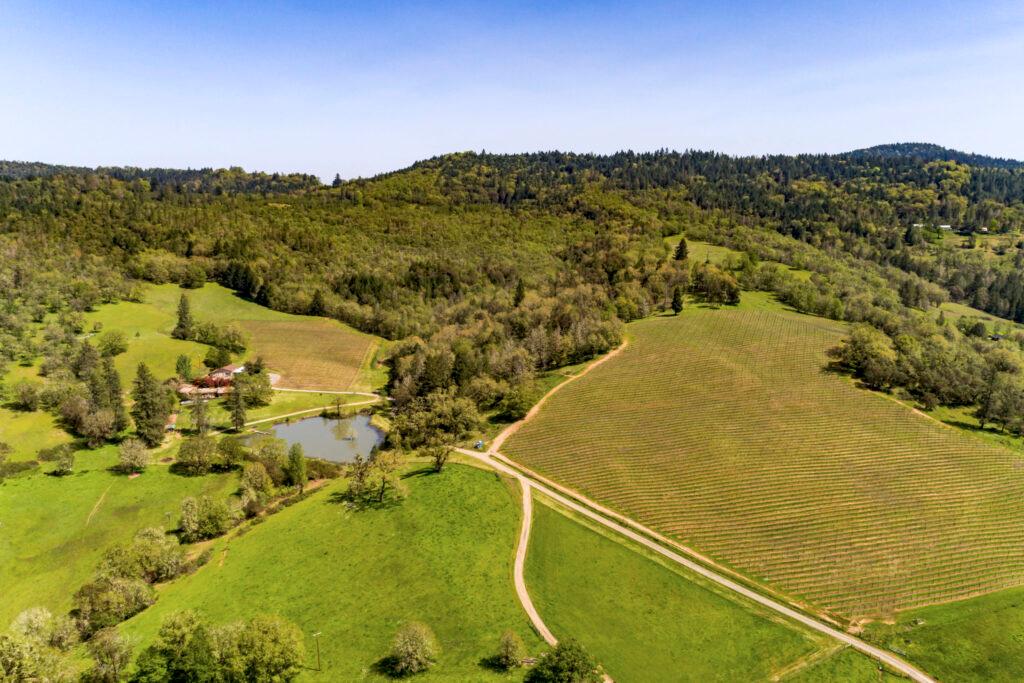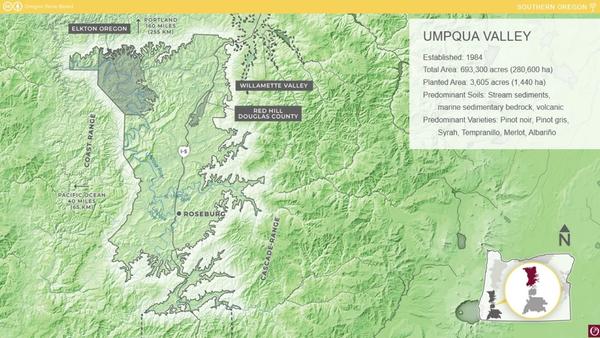
Umpqua Valley AVA
Genuine. Rooted. Bountiful.
Key statistics
1984
Stream sediments, marine sedimentary bedrock, volcanic
3,605 acres

Characteristics
About the region
The Umpqua Valley AVA sits between the Coast Range to the west, the Cascade Range to the east, the Willamette Valley to the north, and the Rogue Valley to the south. It’s near everything, and entirely unique.
The Umpqua Valley’s winegrowing history dates back to the 1880’s when German immigrants planted the first vineyard in the Valley. In 1961, Richard Sommer established HillCrest Vineyard near Roseburg and sunk Oregon’s first Pinot noir vines into the ground. Like his Willamette Valley peers, he ignored the pessimists in California who said Oregon was too cold and wet to grow Pinot. In fact, the Umpqua Valley has one of Oregon’s more diverse regional climates, successfully growing both cool and warm varieties.
The northern area around the town of Elkton enjoys a cool, marine-influenced climate and receives around 50 inches (125 cm) of annual rainfall. Pinot noir and other cool-climate varieties thrive here. The central area to the northwest of Roseburg, has an intermediate climate where both cool and warm varieties do well. The area south of Roseburg is warmer and more arid, similar to the Rogue and Applegate Valleys to the south. Warm-climate varieties, including Tempranillo, Syrah, and Merlot thrive here. Growing season temperatures vary dramatically from north to south creating a gradient of opportunity for winemakers and wine drinkers.

